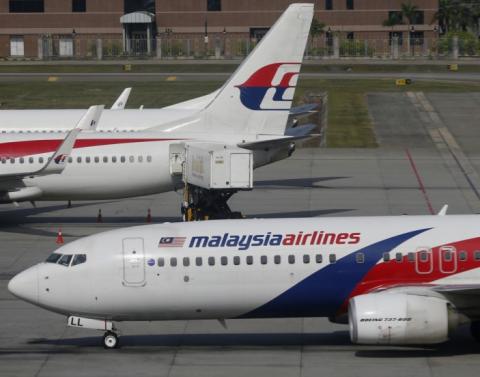Malaysian Airlines Flight MH17: What Could Have Happened to Passengers Immediately After Missile Strike?

By Tom Porter | IB Times
The 298 passengers on Malaysian Airlines MH17 would have been killed instantly or blacked out after the plane was struck by a missile over eastern Ukraine, claim experts.
"You have such horrific forces that it's essentially unsurvivable," said James Vosswinkel, chief of trauma and surgical critical care at the State University of New York at Stony Brook told Bloomberg. "No one was conscious or experienced that fall."
Vosswinkel led a study of TWA Flight 800, which exploded and crashed off New York's Long Island in 1996.
The bodies of the 230 passengers on TWA flight 800 were recovered from the sea with no water in their lungs, which indicated that they had not been alive when they hit the water.
Justin Bronk, research analyst at the Royal United Services Institute (RUSI), told MailOnline that the SA-11 rocket used to target the plane had a tracker and was programmed to explode near the aircraft, tearing the fuselage apart with shrapnel-like steel rods.
"The shrapnel will have hit the wings, the engines and the fuel tanks, igniting the fuel.
"A large aircraft like that is highly pressurised to allow humans to breathe at that altitude so it will have exploded instantly.
"Almost nobody on board would have known what was happening. If not instantly, they will have been unconscious within split seconds."
Bill Waldock, a professor of safety science at Embry-Riddle Aeronautical University, told Bloomberg that the evidence suggests the plane was struck by a missile near its tail, blowing the plane apart.
"That thing uses a proximity fuse which goes off when it gets close," Waldock said, "The warhead is like a giant shotgun shell sending multiple shards of metal through the plane. It's doubtful it hit the plane, but once you lose the tail you can't fly the plane," he said.
"It's literally an explosive decompression and would have caused a lot of g-force pushing people back in their seats," he said.
Waldock, who has studied nearly 2,000 plane crashes, said that while it would have taken minutes for the aircraft to fall from its 33,000 feet altitude, hypoxia would have knocked anyone who survived the explosion unconscious.
Source: International Business Times
